Indoor shade-loving plants: a list of the names of unpretentious flowers
The desire to find a plant for the north window (north-west or north-east) or for a not very well-lit place in an apartment often causes significant difficulties for novice florists. However, in today's environment, flower lovers have a huge choice of indoor plants that are suitable for decorating a home interior, regardless of the degree of illumination.
Below you can find the names and short descriptions of the most popular indoor plants that can grow in the shade or partial shade.
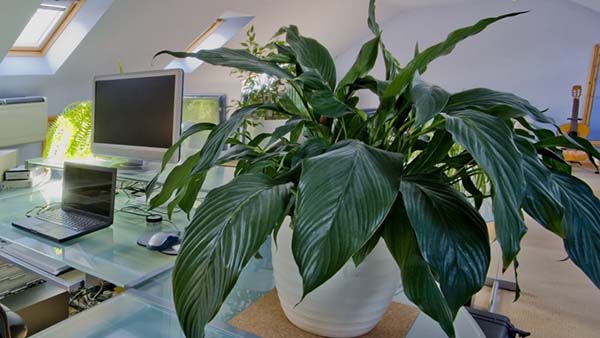
Content
What plants are classified as shade-loving and what are their features
In dark rooms or in the corners of rooms where a minimum of sunlight penetrates, you can successfully grow unpretentious, shade-loving, more precisely, shade-tolerant plants.
In most cases, decorative deciduous plants predominate among shade-loving plants, the main decoration of which is magnificent leaves.
Note! “Variegated or variegated ones will never look attractive if they stand in the back of a room or in a dark corner. The brighter the variegation, the more light the plant needs! If there is no light, variegation will be lost. "
But some flowering plants, vines, palms and ferns are among the shade-loving ones.
It's important to know! All ornamental plants have varying degrees of tolerance for lack of light. Some can perfectly live in a fairly darkened place (on the northern windowsill or in the back of the apartment), while others need to be periodically (for example, depending on the season) moved to a lighter window, or, in principle, kept on the eastern or western windowsill (at least on the northeast or west).
The most popular shade-loving and shade-tolerant indoor plants and flowers: a list of names with descriptions and short tips for care
Most of the shade-loving and shade-tolerant plants are representatives of the tropical and subtropical forests of South America.
Chlorophytum
In many ways, it is one of the most useful and popular indoor plants.

Chlorophytum is unpretentious, caring for it is the most common. Watering is necessary only after the earth is completely dry. On dry and hot days it responds well to spraying. It is a very hardy plant that can tolerate both relatively cold rooms and warm rooms. The same can be said for lighting.
Video: caring for unpretentious and useful chlorophytum
Anthurium (Male happiness)
One of the most attractive features of anthurium is its flower, which looks fake, as if made of plastic. But his leaves are also beautiful, dense and shiny.
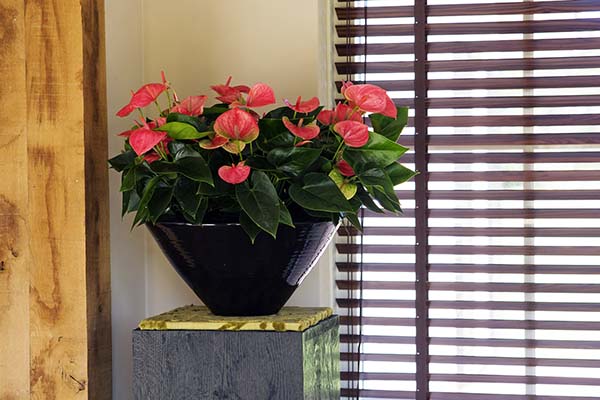
Watering should be moderate, the plant is better to dry out than overflow. Loves spraying. Prefers brighter places without drafts and direct sunlight (scattered ones are needed), but it can grow in the shade, only in this case you will not wait for flowering, so it is advisable to keep it in partial shade.
Video: anthurium care at home
Aglaonema
This is a lush bush with insanely attractive oblong green or colored leaves (very varied in color), which can reach a height of 60-70 centimeters.
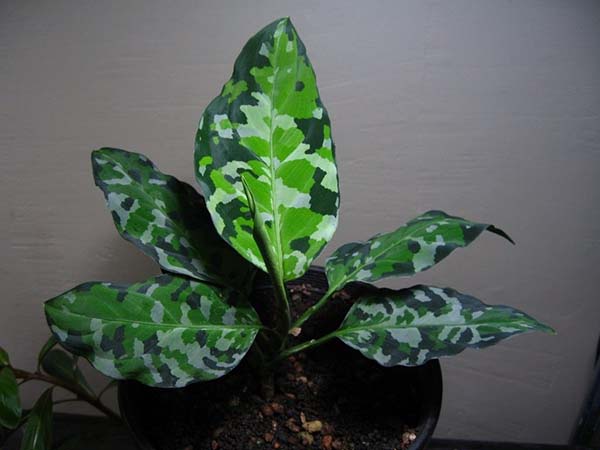
Aglaonema is very unpretentious in care, almost does not need transplants. However, do not forget that it should be watered only after the soil has completely dried out.
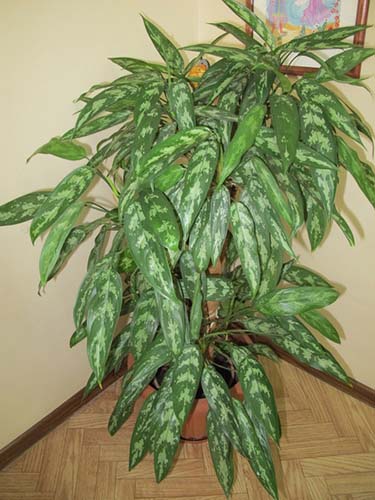
This shade-tolerant plant can grow both on a sunny windowsill (but always in diffused light), and in partial shade in the back of the room. Although for a very short time, you can put it in full shadow. It grows well under artificial lighting, especially in winter.
Video: how to properly care for aglaonema
Fittonia
The color of the leaves of Fittonia excites the imagination: it can be either red or silver-green.

The main thing in caring for Fittonia is moderation in everything: in watering, temperature and lighting. As for its shade tolerance, it is still better to keep it in partial shade on the east or west window, because in the south it will burn (if not shaded from direct sunlight by the best), and in the north it will start to stretch.

Ficus
Ficus leaves are generally dense and fleshy, although they can be small and thin. Moreover, they come in completely different colors - from light green to dark green, there are even variegated specimens.
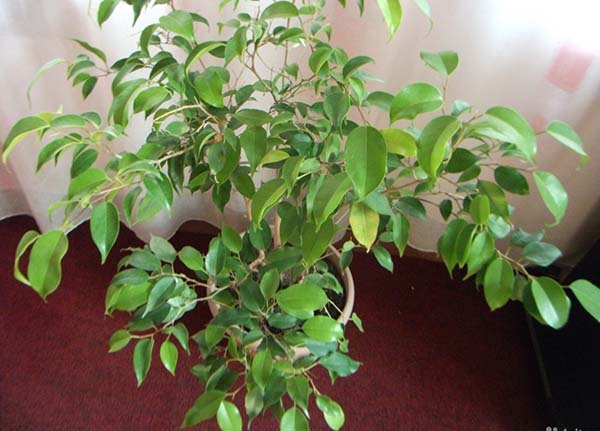
Great for novice florists due to its unpretentiousness. Small-leaved ficuses must be periodically sprayed, large-leaved ones - wipe with a damp cloth or cloth.An important point: the ficus does not like constant movement from place to place, therefore it is better for him to immediately choose a place on the windowsill or in a shallow depth of the room, closed from direct sunlight. It should be noted that ficuses with dense and dark leaves (large-leaved) are better suited to an eastern or western window sill (in extreme cases, a northeastern or western one), while varieties with light foliage and variegated color require an exceptionally well-lit window (southwest or south east), and they even need additional lighting in winter.
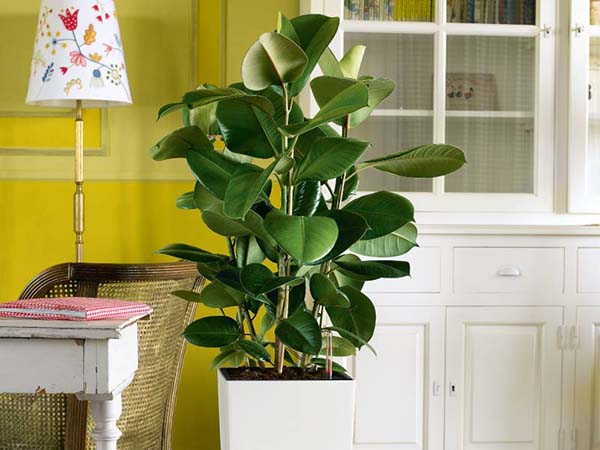
Video: proper care for ficus
Fat Woman (Money Tree)
Who doesn't know what a money tree looks like? Is that not everyone knows that its correct name is "Fat Woman".
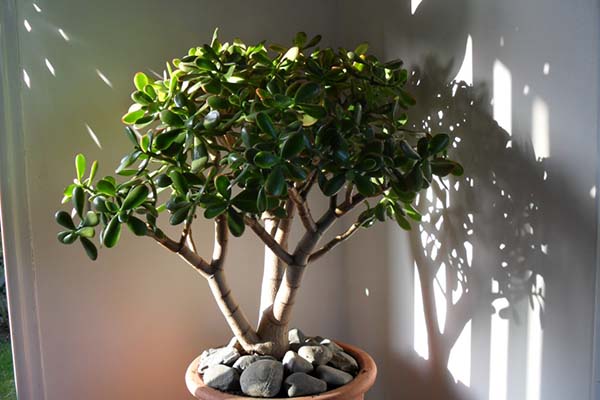
Do not neglect the fact that the money tree does not like abundant and frequent watering, since waterlogging is much worse for this plant than drying out the soil. However, this flower does not require frequent transplants. The fat woman, like all succulents, loves light, but not direct sun bows, but scattered and soft. It is optimal to put it on the eastern window sill. In summer, it is recommended to move the plant to a shady place (but not to full shade) so as not to damage the delicate leaves of the money tree.
Video: caring for the money tree (bastard)
Tradescantia
It has bright green stems that fall in a pretty cascade. Leaves are usually green or purple lanceolate with silvery or light green stripes, and may be pubescent.

The plant does not create problems when growing, but it should be borne in mind that it is quite moisture-loving. Leaves should be sprayed periodically, except for pubescent Tradescantia varieties.
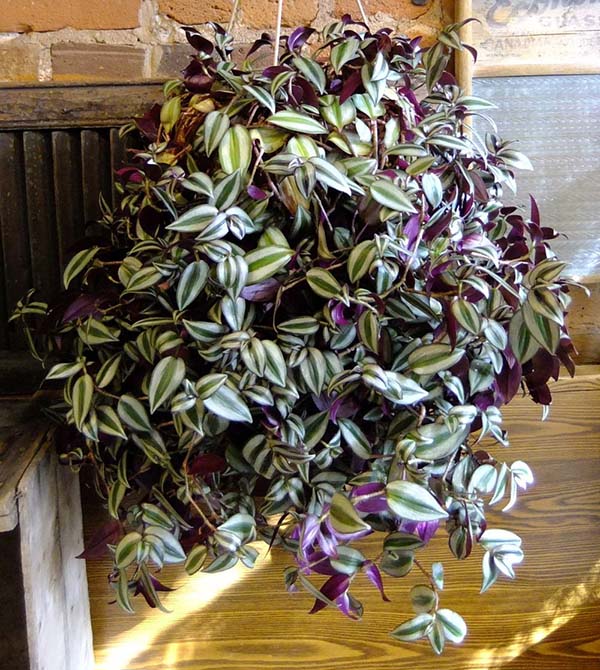
Prefers sufficiently lit places, but always with protection from direct rays, especially in summer. It can grow near windows facing west or east, in principle, it can also bear the northern windowsill (except for variegated and variegated varieties).
Dracaena
This evergreen plant, if you're very lucky, can even delight you with fragrant white flowers.
Grow dracaena very simple - it is the most unpretentious shade-loving plant in self-care, which is perhaps contraindicated in drafts. Just note that over time, the leaves of the dracaena age and begin to fall off. However, do not worry, this is completely normal and does not mean that there is insufficient care.
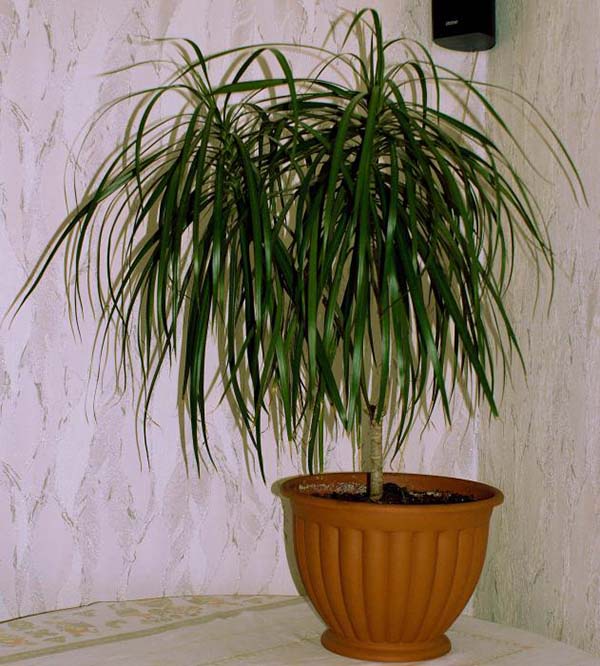
This chiseled graceful flower is perfect for decorating the hall or living room of your house or apartment.
Spathiphyllum (Women's happiness)
This plant has not only shiny dark green dense foliage, but also indescribably beautiful sail-shaped flowers.

Due to its unpretentiousness, spathiphyllum is one of the most popular indoor flowers, because it is able to grow successfully both in somewhat darkened and light rooms. So, in the summer it is optimal to keep it on the northern window, in other periods it is still better to put it on more sunny windowsills, but away from direct sunlight. The main thing is to choose a relatively cool place in the apartment for growing it and water it regularly.
Calathea
Delights with large dark green foliage with light or burgundy stripes. Calathea blooms with spectacular purple or white flowers, but, as a rule, rather reluctantly (unfortunately, it certainly will not bloom in the shade).
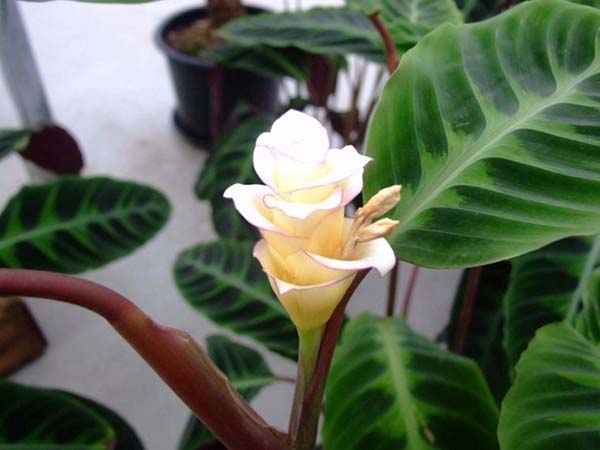
Interesting! With the setting of the sun, the leaves begin to stretch upward, so the calathea is called a prayer flower.

This heat-loving plant does not tolerate drafts; it likes a fairly moderate temperature and high humidity. For the normal growth of calathea, regular spraying is required. It is optimal to keep the flower on the west or east window, although you can take it out to the north window (but then it will not be able to bloom for sure). But in any case, it should be hidden from direct sunlight.
Other shade-loving and shade-tolerant indoor plants
The following are less popular indoor plants, but they can grow in the shade and delight their owners.
Note! Naturally, flowering plants should be on sunny windowsills, but with the obligatory shading, at most on the eastern or western.
But the northern windows will not suit them in any way, they will only drive a leaf on them, but they simply cannot bloom.
Decorative deciduous plants
Aspidistra

Aucuba
Arrowroot
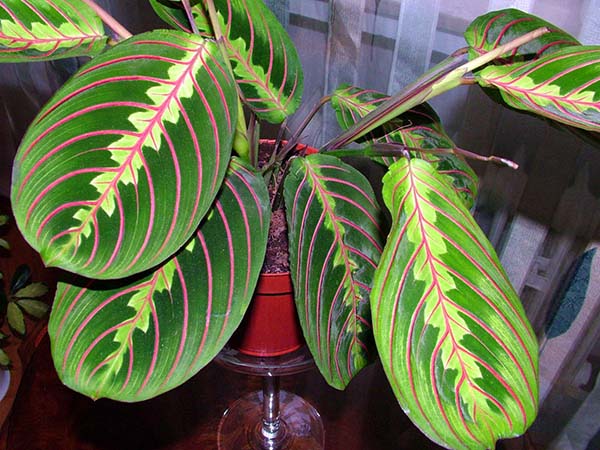
Palm trees, vines and climbing plants
Monstera
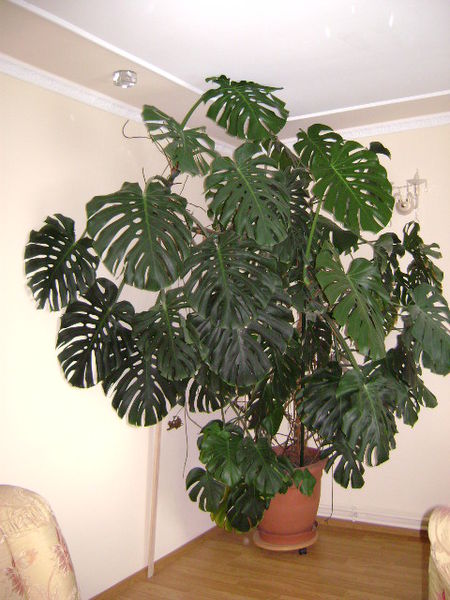
Nephrolepis
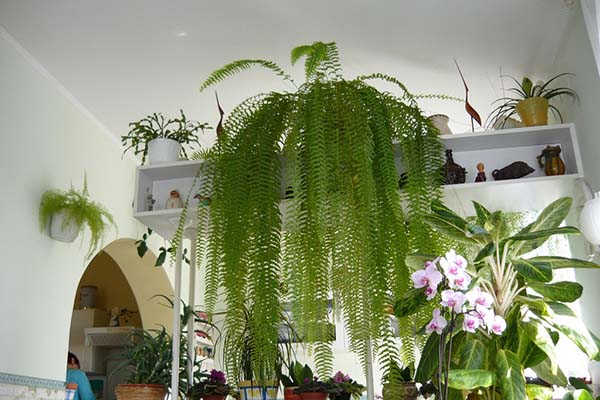
Maidenhair
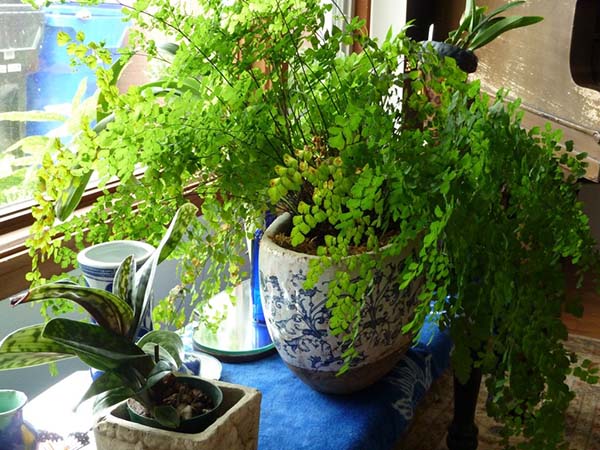
Cretan pteris
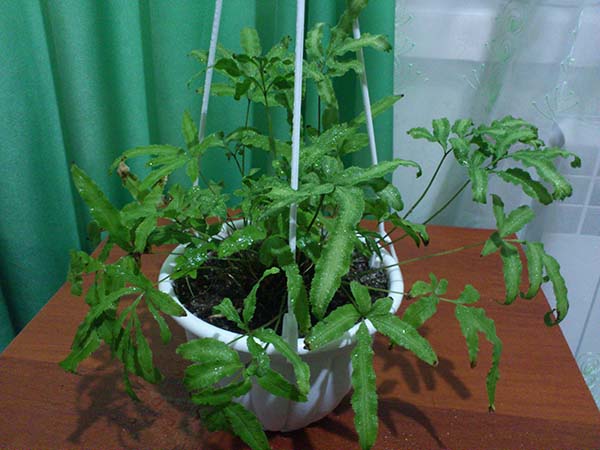
Rapis
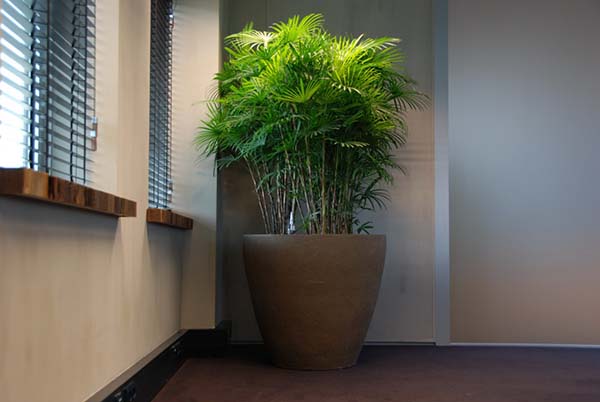
Hamedorea

Cordilina
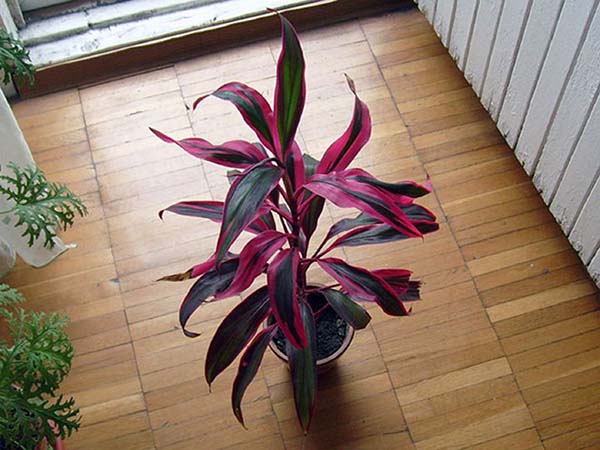
Philodendron
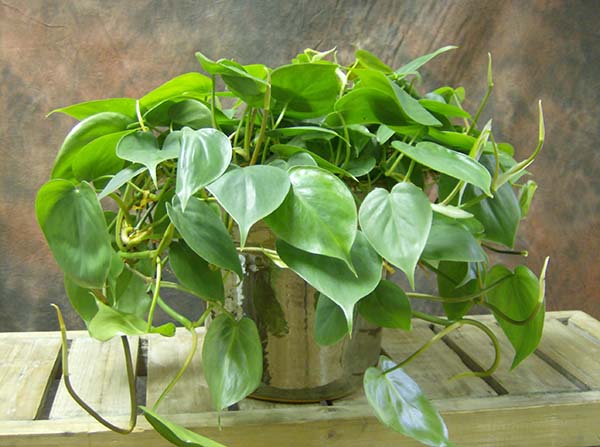
Indoor ivy (Hedera)
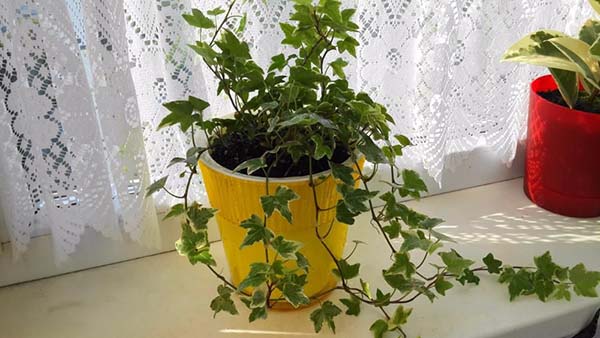
Scindapsus
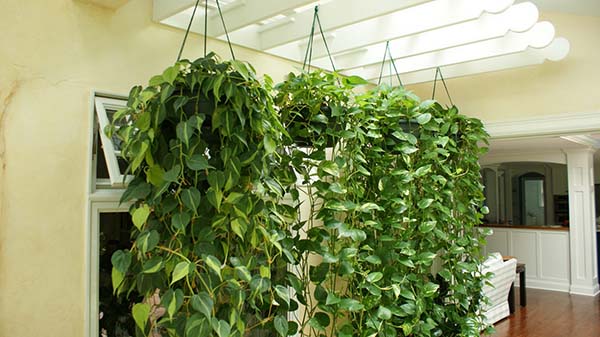
Cissus

Flowering plants
We remind you! Flowering plants with a lack of light will drive only foliage, not flowers. You can wait for flowering only if you move them to a sufficiently illuminated window (at least west or east), but not direct sunlight (you need just scattering, i.e. light shading), otherwise they will burn out.
Saintpaulia (violets)
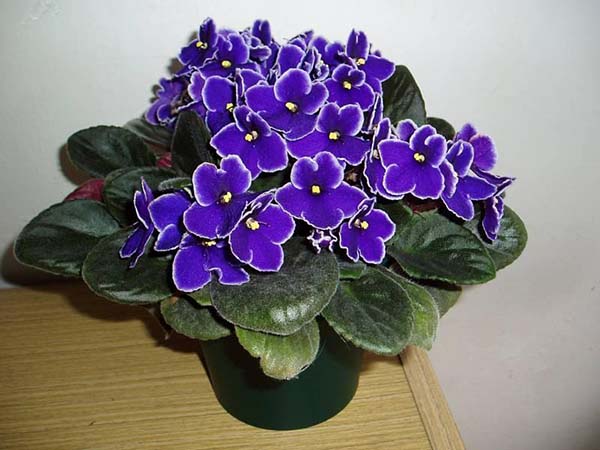
Clivia

Begonia
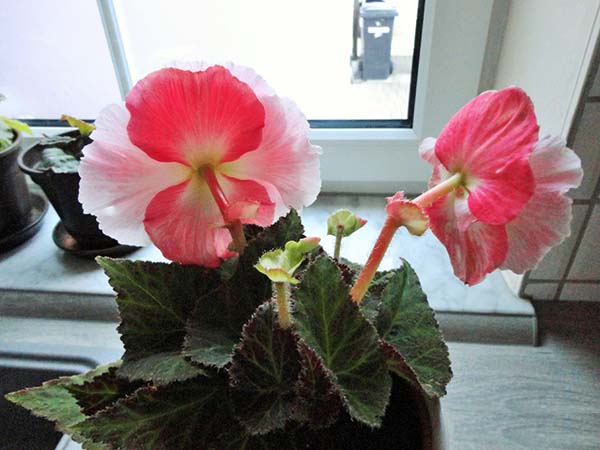
Fuchsia
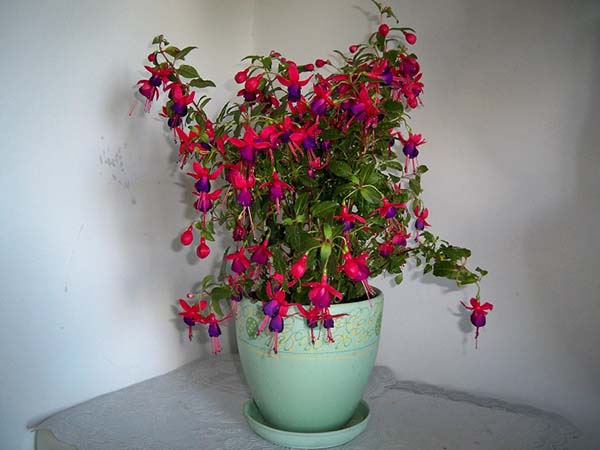
Cyclamen
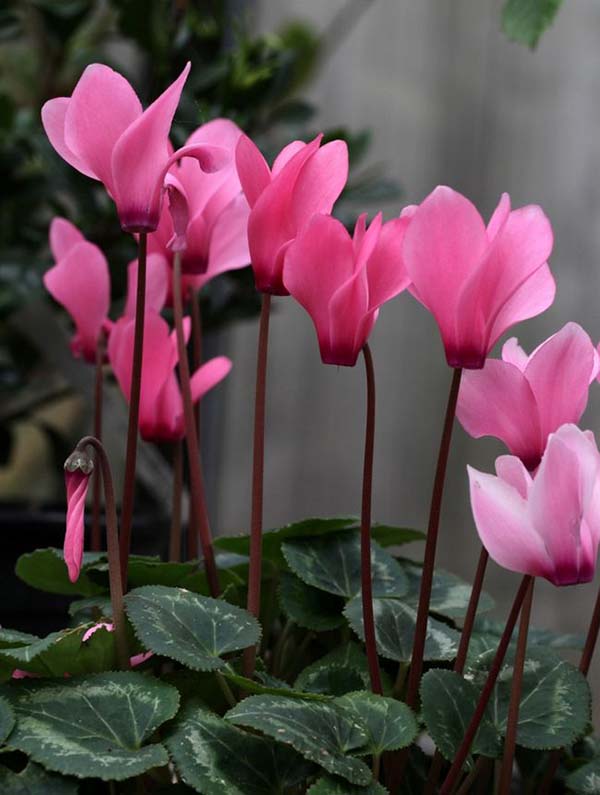
Thus, indoor plants are classified as shade-loving and shade-tolerant, which can grow quite successfully with a slight lack of light (most of them) or even in the absence of it (there are much less of them).
Note! If you disagree with the presented list or would like to replenish it with another name of a shade-loving plant, then write in the comments!
Video: indoor plants for dark rooms



Do not mislead beginner growers. Variegated or variegated ones will never look attractive if they stand in the back of a room or in a dark corner. The brighter the variegation, the more light the plant needs! If there is no light, the variegation will be lost. Blooming flowers will not bloom with a lack of light. Violet and anthurium will drive away foliage, which is not particularly attractive, and you will not wait for flowers until you put them in the most illuminated place. Another thing is that no plants should be placed in direct sunlight, because will burn. But this does not mean that all plants are shade-loving.
Hello!
Thank you for your valuable and detailed comment, with which I completely agree. The material does not really emphasize this (we will add it now). In general, it is more correct to say shade-tolerant plants, and not shade-loving ones (after all, no plant can grow completely without light, another thing is that some deciduous trees may well feel good in a fairly shady corner). But most often these words are used interchangeably.